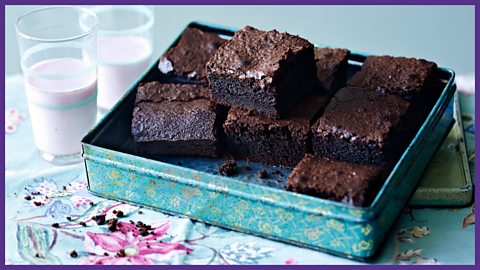Rolling back the curtains and seeing a grey sky can make getting out of a warm snuggly bed difficult, especially if itŌĆÖs cold and wet outside.
The dull weather and short days make winter the least colourful of all the seasons, but what if you could change that, and make it just as vibrant as the rest of the year? Doing colourful activities with your family; like making colourful things and eating more colourfully, will help transform your winter into a more joyful experience. Fancy giving it a try?
Here are five ideas to add more colour into your day.

1. Start a colour challenge jar
Suits children between the ages of 5 to 11
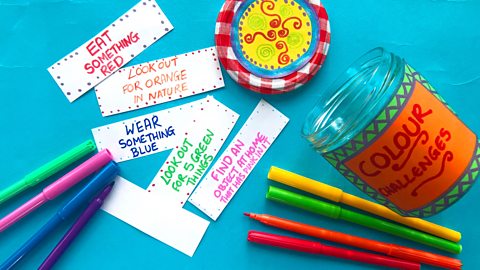 Image source, Momtaz Begum-Hossain
Image source, Momtaz Begum-HossainYouŌĆÖll need:
- clean and empty jam jar with a lid or other similar container
- paper
- scissors
- pen
- glue or sticky tape
- paint, pens or collage materials to decorate your jar.
If you want everyone in your family to join the quest to make life more colourful then try this activity. ItŌĆÖs inspired by ŌĆśmindfulnessŌĆÖ jars where you write down positive thoughts and activities on paper and put them inside a jar. Each day you take one out, have a read, and let it guide your day. In this version, you write down ideas inspired by colour:
First of all, decorate the lid of your jar. You could paint it, colour it in, or add stickers. Then, you need to make a label so that everyone knows why itŌĆÖs a special jar. Make one from paper, write ŌĆśColour challengesŌĆÖ on the label, and stick it on.
Next, make small slips of paper. You could either cut or tear up scrap paper into pieces.
Gather your family around, give everyone a pen and some slips of paper, and ask them to write a different challenge on each one. Then, fold them all up and put them in the jar. YouŌĆÖll find some tips on choosing colour challenges below.
Every day, take one slip of paper out of the jar and let everyone know what the colour challenge is for that day. DonŌĆÖt forget to check back at the end of the day that everyone completed the challenge.
What type of colour challenges will you choose?
You can write down any idea you have but make sure it can be achieved. For example, a task that says ŌĆśeat something green todayŌĆÖ is a challenge everyone can try, whether itŌĆÖs eating peas, an apple or some spinach, but if you said ŌĆśgo to the moon and pick a flowerŌĆÖ then everyone would fail the challenge!

2. Eat a sunshine salad
Suits children between the ages of 5 to 11 (requires adult assistance to cut ingredients)
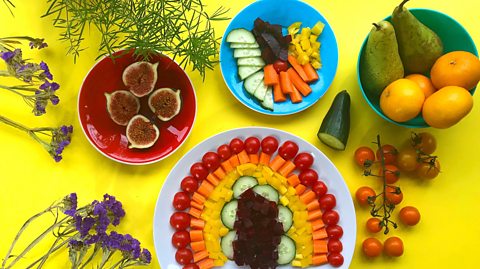 Image source, Momtaz Begum-Hossain
Image source, Momtaz Begum-HossainYouŌĆÖll need:
- a knife (under adult supervision), chopping board, and plate
- vegetable peeler
- salad items in different colours of the rainbow:
- for a savoury salad you could use: red (tomatoes), orange (carrots), yellow (pepper), green (cucumber) purple (beetroot)
- for a fruit salad you could use: red (strawberries), orange (tangerine), yellow (banana), green (kiwi), purple (grapes)
Pick things you have at home or that you usually buy when you go shopping. For a fruit salad, you could use tinned fruit like pineapple chunks and peach slices but not frozen fruit as they will get slimy when they de-frost.
Chefs know that finishing a dish by placing a sprig of parsley on top is the perfect way to present a meal. A little pop of colour from a green herb can transform a boring lunch into a celebratory one. In fact, colour instantly makes any experience more joyful, especially when it involves eating food. So how can you make your mealtimes more colourful? One way is to make a sunshine salad, using the colours of the rainbow. ItŌĆÖs tasty as a snack or as a side.
Sunshine salad recipe:
Wash all your ingredients and leave them to dry. Next prepare each ingredient, which may be different for each one. For example, itŌĆÖs best to peel a carrot before you use it. If youŌĆÖre using tangerine slices, youŌĆÖll need to peel off the outer skin and separate the individual segments.
The chopping up stage involves using a knife so itŌĆÖs best for an adult to do this part, while children can help with the presentation. Chop up each ingredient differently so the rainbow will look more interesting. You could halve the cherry tomatoes, make carrot sticks, create beetroot slices or cucumber cubes
To make your rainbow arch, place your chopped-up ingredients on the plate in colour order with red at the top, then yellow, orange, green, and purple. Then itŌĆÖs time to tuck in.
TOP TIP: You donŌĆÖt have to stick to a rainbow. What other pretty patterns could you create making salad art?

3. Make Paper Confetti
Suits children between the ages of 5 to 11
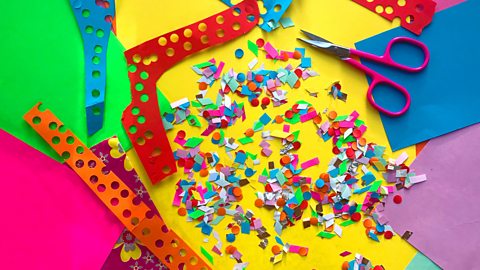 Image source, Momtaz Begum-Hossain
Image source, Momtaz Begum-HossainYouŌĆÖll need:
- safety scissors
- assorted paper (tissue paper and wrapping paper works well, but you can use any type)
- a jar or box to store your confetti in
- tin foil (optional)
- hole punch (optional)
YouŌĆÖll usually find confetti at special occasions like weddings and birthday parties, maybe sprinkled over the happy couple after a ceremony or inside balloons, but there are other uses for confetti too. For one, bringing more colour to your life. Making your own confetti is fun and easy, why not have a go?
ThereŌĆÖs lots of cutting involved in making confetti but you donŌĆÖt need to worry about neat or straight lines, it looks best when itŌĆÖs all mixed up and made from different shapes and sizes. To make confetti, start by cutting your paper into thin strips. Depending on the age of your child, use safety scissors or, have an adult cut these.
Here are three easy shapes to try:
- Take a strip of paper, place your scissors at a diagonal, and cut along it to create diamond shapes
- Cut your strips straight to make small squares
- If you have a hole punch you can punch holes along your strip and gather up the circles.
- Go for different colours and types of paper so your confetti looks more magical. Store it in a jar or box.
TOP TIP: Use bits of tin foil to make your confetti sparkle.
Ideas for using your confetti:
- Sprinkle confetti on your breakfast table at the weekends to start Saturdays with a smile
- Pour some into an envelope when you send cards or letters to friends and family to surprise them (but not too many to avoid annoying them!)
- Make a confetti shaker by pouring some into a clean, empty bottle.

4. Go on a colour walk
Suits children from the age of 5 to 11
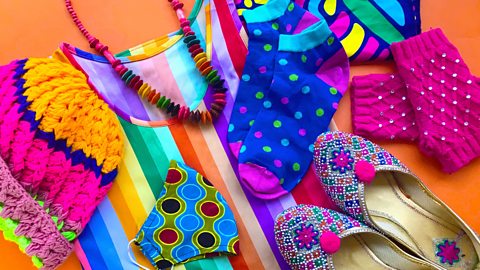 Image source, Momtaz Begum-Hossain
Image source, Momtaz Begum-HossainYouŌĆÖll need:
- colourful clothes/accessories
- paper
- pen
This is a fun weekend activity where everyone dresses up in their most colourful clothes and then heads out on a colour-hunting mission.
Start by making a chart on a piece of paper. Draw a table with seven headings. The headings should be: Red, Orange, Yellow, Green, Blue, Purple, Pink. Underneath each heading leave space to write down your discoveries.
On the day of your colour walk, everyone in your family should wear their most colourful clothes, this could mean wearing a colourful jumper, a hat, scarf, or even wellies.
Head out on your walk and donŌĆÖt forget to take your chart and a pen with you. Each time you spot one of the colours on your chart, write down where youŌĆÖve seen that colour. Aim to write down five things under each heading.
If youŌĆÖre walking around a town or city, look out for colourful shop windows and painted murals on walls. If youŌĆÖre going to the park then take a look at this article packed with ideas on how to turn a walk in the park into a colourful craft activity.

5. Add colour to your home
Suits children from the age of 7 to 11
 Image source, Momtaz Begum-Hossain
Image source, Momtaz Begum-HossainYouŌĆÖll need:
- colourful fabric
- pictures
- sticky re-usable putty
If your home interiors are vibrant, it will lift your spirits on dull days. Here are two quick ideas to try to make your home happier:
1. Transform your home with tablecloths.
Whether you have a coffee table, a sideboard, or other surface by placing colourful fabric on top, you can create an instant tablecloth as an easy way to add colour.
See what you have at home. Look for old fabrics, a patterned duvet cover, bedsheet, or perhaps you have some tablecloths in storage? If so, itŌĆÖs time to bring them out. You could swap them around by changing them regularly. Some fabrics may need to be cut to make them smaller or fold them over.
2. Make a home gallery.
A lot of people like sticking up drawings and pictures, maybe childrenŌĆÖs colouring-in on the fridge door, or framing pictures and hanging them. One way to make these artworks even more special is to create a gallery area. This could be on a door, a wall in the corridor, or even inside a garden shed.
Arrange pictures close together, make a sign to hang above them that says ŌĆśGalleryŌĆÖ, and each week have a vote and award one of them ŌĆśPicture of the week.ŌĆÖ Make sure you look at the gallery wall every day. Spending time appreciating art by looking at all the colours and details can put you in a good mood.
Hopefully, the added colour in your daily life will help chase away any winter blues. Surrounding yourself in colour can have positive benefits, it might make you feel happy, boost your wellbeing, and give you something to look forward to. So why not try these ideas out and share them with friends and family so they can make their winter more colourful too.

Words & images: By colour and crafts expert Momtaz Begum-Hossain.

More from │╔╚╦┐ņ╩ų Bitesize Parents' ToolkitŌĆ”
Parents' Toolkit
Fun activities, real-life stories, wellbeing support and loads of helpful advice - we're here for you and your child.

Seven ways to get your kids outdoors
Getting your teens out of the house and into nature can boost their health and wellbeing. Tips on how to do it from parents who are outdoors enthusiasts.

Rob Biddulph's five tips to help you confidently draw with your kids
Rob Biddulph, author and official illustrator for World Book Day, has some great tips and tricks to share to help you draw with your kids.
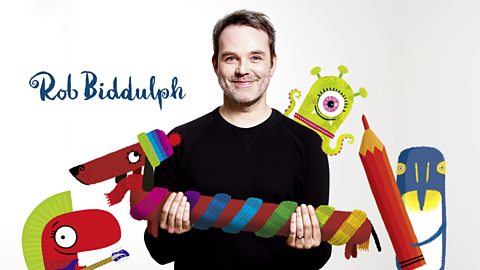
Five cooking and baking activities to try with your child
Ideas to get your kids in the kitchen, trying new flavours and learning the basics of cooking and baking.
